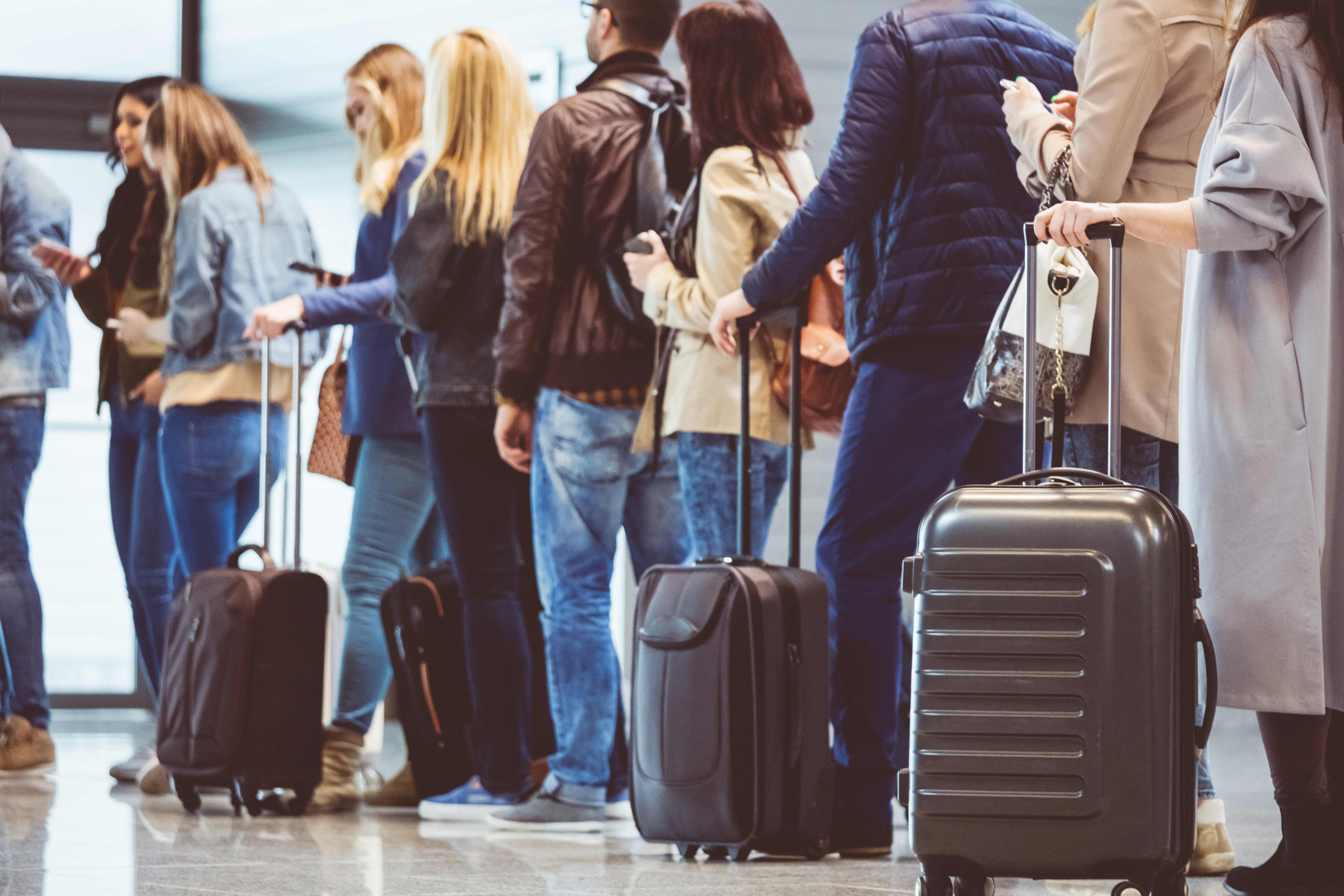 Reading Time: 6 minutes
Reading Time: 6 minutesThe airline industry is a marvel in the modern engineering and logistics space, connecting millions of passengers across the globe daily. With over 4.5 billion passengers taking to the skies in 2023, the staggering number highlights the industry’s scale and the complexity of managing such a vast network of flights. With this complexity comes the challenge of delays, which can ripple through schedules and affect countless travellers.
In recent years, the airline industry has embraced technology to enhance efficiency and customer experience. From biometric boarding passes to AI-powered customer service, airlines are leveraging advanced analytics solutions to stay ahead. One notable trend is the shift towards data on cloud, enabling real-time data access and AI-powered insights. This transformation is crucial for managing operations and predicting potential disruptions.
Airline delays
One important area of concern in the industry is airline delay. There are innumerable reasons why an airline could arrive delayed at an airport – some that can be controlled, and some that cannot be. Starting from crew delay to gate assignments at airport, air traffic, aircraft issues, ground crew maintenance, passenger handling, luggage handling, weather, disasters (natural/ man-made), anything could cause delays. Insights show that the number of delays caused by issues within air carriers’ control has jumped from 5.2% in 2018 to 7.6% in 2023 as per CBS News.
This means the operations manager responsible for handling this has 2 key areas of responsibilities. One is to predict and avoid the delays and other is to handle the delay effectively to minimize the impact on customer satisfaction and loyalty levels. Delays can lead to missed connecting flights, disrupted plans, and increased stress for passengers. For airlines, this translates to potential revenue loss and damage to their reputation. Understanding and mitigating delays is essential for maintaining a positive customer experience as well as strategizing to improve areas of business that can reduce delays.
How airlines are tackling delays
Airlines around the world are adopting innovative strategies to predict and manage delays. Here’s a glimpse of the process:
- Data collection and integration: Airlines gather vast amounts of data from various sources, including weather forecasts, air traffic control, and historical flight data. This data is then integrated into a centralized system using data transformation techniques.
- Advanced analytics and AI: Leveraging augmented analytics and AI-powered data analytics, airlines can analyse patterns and identify potential delay triggers. Artificial intelligence platforms play a crucial role in processing this data and providing actionable insights.
- Predictive modeling: Using ML operations and decision intelligence, airlines build predictive models to forecast delays. These models consider multiple variables, such as weather conditions, aircraft maintenance schedules, and crew availability.
- Real-time monitoring and decision making: With data-driven decision making and AI-powered insights, airlines can monitor flights in real-time and make informed decisions to mitigate delays. This proactive approach helps in minimizing disruptions and enhancing operational efficiency.
Delay prediction models and key factors
Predicting delays involves creating sophisticated models that analyse various factors influencing flight schedules. Key factors include:
- Weather conditions: Severe weather can cause significant delays. Predictive models use historical weather data and forecasts to anticipate disruptions.
- Air traffic control: Congestion in air traffic can lead to delays. Models analyse traffic patterns to predict potential bottlenecks.
- Aircraft maintenance: Unexpected maintenance issues can ground flights. Predictive maintenance models help in anticipating and addressing these issues before they cause delays.
- Crew availability: Crew scheduling conflicts can lead to delays. Models optimize crew schedules to ensure availability.
- Airport gate assignments: Depending on the type of arrangement between airlines and airports, gates are assigned and reassigned. Airports play a major role since they need to plan to tackle inbound and outbound flights across airlines
Strategic actions for operations managers
The first course of action is to derive actionable insights on various areas where delay shows a specific trend. For example, flights with specific tail numbers from a particular airport is always delayed, or flights starting in late evenings on specific days of the week are delayed from across airports. We could also notice patterns where less airtime routes have more delays or regions having harsh weather conditions and busy airports could face delays. This insight is crucial to then analyse the areas that can be improved and areas that are not in control of the airline.
This could mean changing the airtime of certain flights to manage making up for the delay time, changing gate assignments in coordination with airlines to ensure air traffic issues are handled, and many more such interventions.
Once delays are predicted accurately, customer experience managers can also strategize to minimize the impact of delays on customers.
One such example is sending out email and SMS communications to passengers promptly in case of expected delay, so they can plan their downstream activities accordingly. Airlines also think of strategic partnerships with food and accommodation vendors in case of prolonged delays and lounge tie ups to provide free of cost entertainment for customers in need.
A long list of back-end activities also needs real-time updating such as crew schedules, ground staff and maintenance equipment management, in-flight food and entertainments, etc.
To sum up,
1. Proactive communication: Informing passengers about potential delays and providing alternative options can enhance customer satisfaction.
2. Resource allocation: Adjusting resources, such as ground staff and equipment, to manage delayed flights efficiently.
3. Contingency planning: Having backup plans for critical situations, such as rerouting flights or arranging additional crew, can mitigate the impact of delays.
It is crucial to understand the depth of the impact of delays through real life scenarios. Here are some cases of airline delays and their impacts on the business:
1. Southwest airlines holiday meltdown (December 2022):
- Overview: During a massive winter storm in late December 2022, Southwest Airlines experienced a significant operational failure, leading to the cancellation of over 14,000 flights in just one week [1]. This disruption left thousands of passengers stranded and caused widespread frustration.
- Impact: The incident severely damaged Southwest’s reputation and led to financial losses due to compensation claims and refunds. The airline also faced increased scrutiny from the U.S. Department of Transportation (DOT), which launched an investigation into the airline’s scheduling practices [1].
2. Spirit Airlines operational issues (August 2021):
- Overview: Spirit Airlines faced a series of operational challenges in August 2021, resulting in the cancellation of 55% of its flights over several days[2]. The disruptions were attributed to a combination of weather issues, staffing shortages, and technical problems.
- Impact: The cancellations led to a surge in customer complaints and negative publicity. Spirit Airlines had to invest in improving its operational resilience and customer service to regain passenger trust [2].
3. U.S. Airlines post-pandemic recovery challenges (2021-2022):
- Overview: As air travel demand surged post-pandemic, U.S. airlines struggled with staffing shortages, particularly among pilots and mechanics[3]. This led to increased flight cancellations and delays, affecting millions of passengers.
- Impact: The operational challenges highlighted the need for airlines to adjust their schedules and improve workforce management. DOT increased its oversight of airline scheduling practices to ensure realistic flight schedules and better customer service[3].
4. British Airways IT system failure (2017):
- Overview: British Airways experienced a major IT system failure in 2017, causing widespread flight cancellations and delays. The incident disrupted critical systems, including flight scheduling and baggage handling [4].
- Impact: The failure resulted in significant financial losses and reputational damage. British Airways had to invest heavily in upgrading its IT infrastructure and improving crisis management protocols [4].
These cases illustrate the significant impact that delays and cancellations can have on airlines, from financial losses to reputational damage. They also underscore the importance of robust operational strategies and effective use of technology to mitigate such disruptions.
Simplifying delay prediction
Enter the Fosfor Decision Cloud, an enterprise AI platform designed to simplify and accelerate the process of building delay prediction models. Here’s how it stands out:
- User-friendly design studios: Fosfor’s intuitive designers enable users to create complex models without extensive coding knowledge. This democratizes access to advanced analytics and empowers more team members to contribute to the process.
- Generative AI platform: By leveraging Generative AI, Fosfor generates predictive models that are both accurate and efficient. This capability reduces the time and effort required to develop robust solutions.
- Seamless data integration: Fosfor supports seamless integration with various data sources, ensuring that all relevant information is available for analysis. This integration is key to building comprehensive and reliable models.
- Actionable data insights: The platform provides actionable data insights that help airlines make informed decisions quickly. These insights are crucial for real-time monitoring and proactive delay management.
- Scalability and flexibility: Fosfor’s advanced analytics solution is scalable and flexible, making it suitable for airlines of all sizes. Whether you’re a regional carrier or a global airline, Fosfor can adapt to your needs.
Conclusion: Soaring to new heights with AI
In conclusion, predicting airline delays is a complex but essential task for enhancing customer experience and operational efficiency. By embracing data driven decision making and leveraging platforms like the Fosfor Decision Cloud, airlines can navigate the skies with greater confidence and precision. With AI-powered insights and decision intelligence, the future of air travel looks brighter and more reliable.
So next time you board a flight, remember that behind the scenes, advanced technologies and innovative solutions are working tirelessly to ensure you reach your destination on time. Safe travels!
References
- [1] https://www.cbsnews.com/news/southwest-airlines-flights-cancellations-winter-storm/
- [2] https://www.bloomberg.com/news/articles/2021-08-03/spirit-american-cancel-hundreds-of-flights-for-a-second-day
- [3] CBS News on Airline Delays
- [4] https://www.theguardian.com/business/2017/may/31/ba-it-shutdown-caused-by-uncontrolled-return-of-power-after-outage
- [5] https://www.cbsnews.com/news/the-future-of-flying-more-delays-more-cancellations-more-chaos/
- As Demand for Flights Takes Off, What Is Being Done to Reduce …
- British Airways IT System Failure
- US News on Spirit Airlines
- https://www.gao.gov/blog/demand-flights-takes-what-being-done-reduce-cancellations-and-delays
- Flight delays, cancellations could continue for a decade amid airline …








